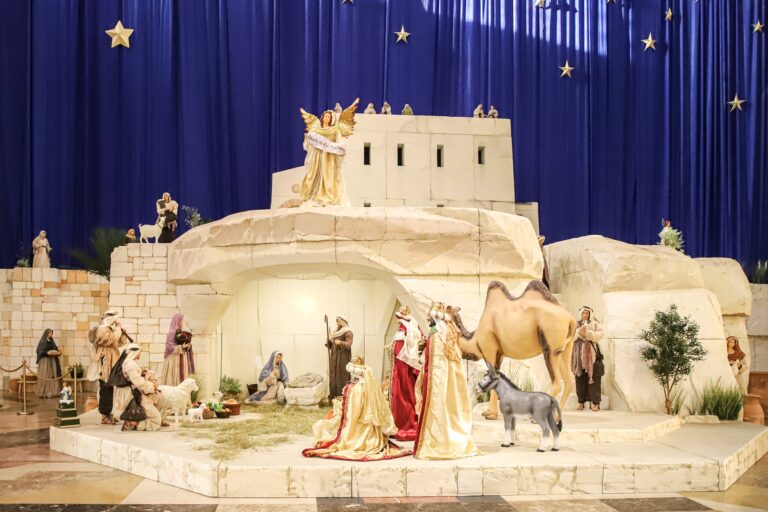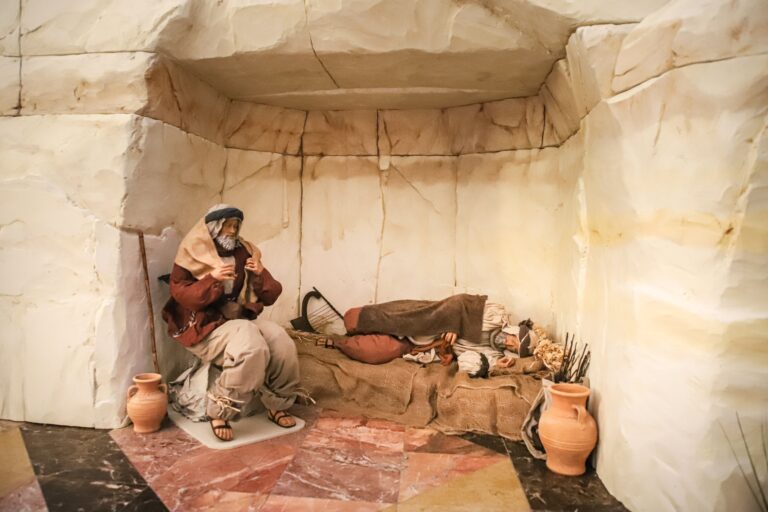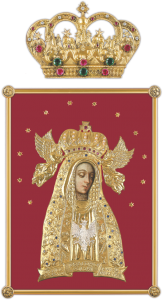The nativity scene is a representation of the grotto of Bethlehem against the background of a house. In the center there is the scene of the birth of Jesus in Bethlehem, that is, in the house of bread. And this is the main message of the nativity scene: this bread is Jesus Christ who comes into the world to feed us.

– “The central point of the nativity scene is, of course, the scene of the birth of Jesus Christ, without which no Christmas stable can do. Mary and Joseph are watching over the Newborn. The shepherds and the three wise men from the east are also present. Of course, animals could not be missing - in the lichen shed, we will see sheep, a donkey or a life-size camel. In addition, on the right and left you can see scenes from the lives of Jews living in Palestine at that time: a woman who bakes bread; we have another woman who came to the pool for water; After all, we have shepherds who have fallen asleep in the grotto, and who will be awakened in a moment by an angel announcing the good news to them " - enumerates Fr. Janusz Kumala, MIC, custodian of the Lichen sanctuary, originator and initiator of the construction of a new nativity scene.
Among other elements of the decor, which are an integral part of the composition, there are also baskets full of fruit, an orange tree and a fruiting olive tree, drying herbs and jars as well as real matzahs, which in modern times were the main source of food for people.
This year, the nativity scene in our basilica has a slightly different convention than before. This is a representation of the grotto of Bethlehem against the backdrop of a house. In the center there is the scene of the birth of Jesus in Bethlehem, that is, in the house of bread. This is the main message of our nativity scene. This bread is Jesus Christ who comes into the world to feed us
Fr. Janusz Kumala, MIC, December 23, 2021
The inspiration for the creation of a completely new nativity scene were two elements: the first was a virtual tour of a village near Nazareth, recreated and prepared thanks to the work of archaeologists. In that village, the interiors of houses, a carpenters' workshop, a weaver workshop, a bread oven and other elements of the life of people from the times close to Jesus Christ were faithfully recreated. The second were 19th-century lithographs made on the basis of extremely beautiful watercolor sketches and drawings by David Roberts, who traveled around the Holy Land in 1838-1839. The painterly notes from this journey were issued as individual lithographic cards in a portfolio entitled "Holy Land". The collection of these cards is in the Museum of Fr. Józef Jarzębowski in Licheń Stary.

The custodian priest encourages the pilgrims to reflect for a moment on the mystery of the incarnation of the Son of God in the atmosphere of the Bethlehem performance. The Apostolic Letter of the Holy Father Francis can help in understanding the symbolism „Admirabile Signum” o znaczeniu i wartości żłóbka, written by the Pope two years ago. The letter was reprinted and made available at the Lichen basilica.
– It is a very beautiful meditation that will help not only to understand the symbolism of the crèche, but also to experience the birth of Jesus in Bethlehem more deeply. - says Fr. Janusz Kumala.
- In a special way, starting from its Franciscan origin, the crèche is an invitation to "feel", "touch" the poverty that the Son of God chose for himself in his incarnation. Thus, it is an indirect invitation to follow his path of humility, poverty and emptiness, which leads from the nativity scene in Bethlehem to the cross. It is a call to meet Him and serve Him with mercy in the most needy brothers and sisters.
Excerpt from the Apostolic Letter "Admirabile Signum" of the Holy Father Francis, about the meaning and value of the manger
The Licheń nativity scene can be visited in the basilica every day during the opening hours of the sanctuary.

